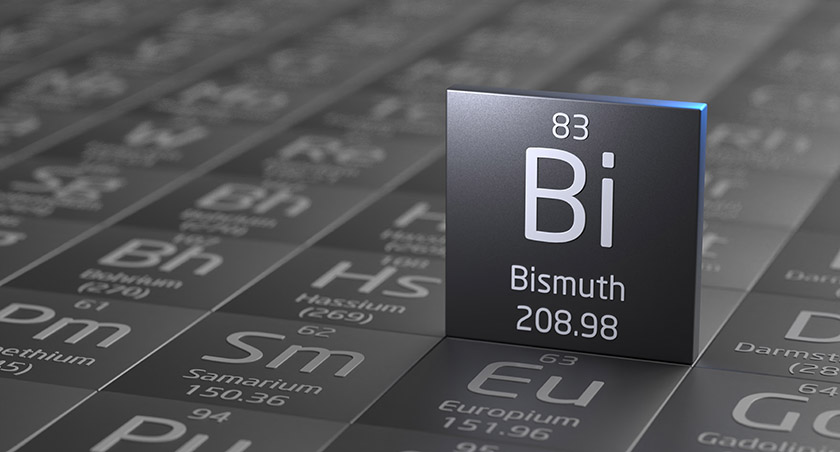More news
- Focus on the global coatings market: Global coatings market outlook
- View from the UK: Navigating chemical policy and sustainability
- Focus on adhesives: Unveiling unbreakable bonds – Testing redefines physical strengt...
- Focus on adhesives: Henkel and Covestro collaborate for sustainability of engineered wood ...
- Advances in construction chemical technology: What’s new in 2024?

 The world is in a transformational energy transition to renewable power systems and new technologies enabled by a completely different suite of raw materials needed to support the growing green economy. Many of these materials are commonly referred to as “Technology Metals” and are identified on country specific “Critical Minerals” Lists. Minerals considered “Critical” have important uses in essential industries and defense, cannot be easily substituted by other materials, and have concerns about their current sources of supply due to geographic concentration of production, geopolitical issues and/or policy risks, or they may come from countries with Environmental-Social Governance (“ESG”) practices that are not aligned with western democratic standards and values. New supply sources in reliable countries are therefore needed to diversify production and mitigate risks.
The world is in a transformational energy transition to renewable power systems and new technologies enabled by a completely different suite of raw materials needed to support the growing green economy. Many of these materials are commonly referred to as “Technology Metals” and are identified on country specific “Critical Minerals” Lists. Minerals considered “Critical” have important uses in essential industries and defense, cannot be easily substituted by other materials, and have concerns about their current sources of supply due to geographic concentration of production, geopolitical issues and/or policy risks, or they may come from countries with Environmental-Social Governance (“ESG”) practices that are not aligned with western democratic standards and values. New supply sources in reliable countries are therefore needed to diversify production and mitigate risks.
Bismuth is identified as a Critical Mineral by most Western economies because of its unique physical and chemical properties, growing consumption, and supply chain risks due to China’s control over 75% of the global production and 60% of world reserves. The bismuth market is approximately 20,000 metric tonnes per annum, but consumption is expected to grow at about 7.5% CAGR between now and 2030.
Bismuth is a silvery-white metal that can give colourful iridescent tinges on oxidised surfaces. It has very high density, a low melting temperature and it is the most diamagnetic of all metals. Bismuth also has very low thermal conductivity and high electrical resistivity, but when deposited in sufficiently thin layers on a substrate, it is a good semiconductor. When alloyed with copper and strontium, bismuth is a superconductor. Bismuth is also one of the few metals that expands when cooled, increasing the volume by 3.32% on solidification. It is therefore used to make low-melting temperature typesetting alloys and castings where it compensates for the contraction of the other alloying metals to form isostatic or dimensionally stable alloys or compounds. Bismuth is also non-toxic, environmentally safe and has anti-bacterial properties, leveraged in the pharmaceutical and cosmetics industries to make medicines like Pepto-Bismol ®.
Bismuth applications
Bismuth coatings have historically been responsible for the greatest demand in the bismuth market, particularly from the automotive sector. Glass frits are decorative coatings applied to automotive windshields and glass panels to protect the glues that seal and bond the glass to the car frame. The high density of bismuth provides a barrier to block sunlight and also protects the seal from expansion and contraction during changing temperatures.
Some automotive manufacturers use bismuth containing alloys to coat metal frames and body panels to provide protection from corrosion. The low melting temperature of bismuth reduces energy consumption in the melt and the expansion properties during cooling reduces and the risks from shrinkage cracking when the hot metal alloy cools after being electro-plated.
Bismuth Vanadate pigments are valued for their bright yellow, highly saturated colours characterised by outstanding opacity/hiding power, chemical resistance, excellent weatherability and durability. Bismuth mitigates lead-toxicity concerns in this application and is environmentally safe. Bismuth iridescence is also leveraged to make pearlescent paints and metallic paint lustres.
Bismuth also has non-coating applications in the automotive industry, including self-lubricating abrasives used to make clutch and brake friction pads.
In the residential and commercial construction industry, the low melting temperature and reduced volume of bismuth during heating is leveraged to make the trigger mechanisms for fire depressant sprinkler systems. These properties are also valued in the nuclear energy industry, with some reactor designs using bismuth as a reactor coolant. The high density is also now used to make no-toxic radiation shielding foils and x-ray bibs.
READ MORE:
EU regulations round-up: September 2023 – Sustainability reporting standards loom
Growth and developing markets for bismuth
Growth in the bismuth market is primarily attributed to lead replacement because of concerns over lead-toxicity and legislation that has banned lead use in potable drinking water sources, consumer products and for workplace materials. Bismuth is scientifically recognised as environmentally safe and non-toxic, but otherwise has similar physical and chemical properties to lead. It is therefore used to replace lead in brasses and solders used for the wetted surfaces of potable drinking water sources (e.g. faucets, valves and water metres). Bismuth solders are also used in the electronics industry. Bismuth also replaces lead in free machining steels and aluminium, hot dip galvanising alloys, radiation shielding, glass, ammunition, and fishing sinkers.
There is a new, rapidly expanding market for bismuth metal, making environmentally safe, high density and impermeable plugs to permanently seal oil and gas wells when they are decommissioned, preventing greenhouse gas leakage, blowouts and groundwater migration. Bismuth-tin alloy is used in this application because of the low melting temperature and low viscosity of the melt which fills the porosity. The alloy expands 1% upon cooling to make an impermeable seal to permanently plug the hole and eliminate greenhouse gas leakage. Tin is used in the alloy to mitigate the brittleness of bismuth and reduce the expansion properties of bismuth so that the host rock is not fractured from the expansion. This method is now used extensively for offshore well plugging in the North Sea and Gulf of Mexico, where individual plugs can consume up to 10 tonnes of metal. The method already accounts for approximately 10% of bismuth metal consumption and is now being used to plug terrestrial wells. Notably, there are more than a million abandoned oil and gas wells in North America alone that have been improperly decommissioned and are leaking gases into the atmosphere.
Another important developing market for bismuth metal is in the manufacture of manganese-bismuth permanent magnets. The performance of these magnets was recently validated by the U.S. Department of Energy at their Pacific Northwest Laboratory and they were found to be cheaper and superior to rare earth element (REE) magnets in some applications. The magnets have potential use in the powertrains for electric vehicles (EV’s) with direct current (DC) powertrains, which dominate the EV industry. Two Korean magnet companies and an unidentified OEM are in the process of commercializing theses manganese-bismuth magnets for eMobility.
Bismuth is used in defense to make directed energy weapons. This, and other applications led the U.S. Department of Defense to add bismuth to the list of Critical Minerals prioritised for DPA Title III funding support.
The bismuth price in North America is approximately US$4 to US$4.50 per pound and reflects a 25% tariff levied on Chinese bismuth supply by the U.S. Government. The price has been steadily recovering from increased market demand and absorption of a previous surplus of metal that was held by the now defunct Fanya Metals Exchange in China. Prior to this surplus, the price had traded between US$8 to US$10 per pound and attained has reached a historic high price of US$23 per pound.
Fortune Minerals Limited (Fortune) is developing its vertically integrated NICO Cobalt-Gold-Bismuth Copper Project in Canada, comprised of a planned mine and concentrator in the Northwest Territories and a hydrometallurgical refinery near Edmonton, Alberta. While primarily a cobalt-gold project, NICO is the largest deposit of bismuth in the world, containing 12% of global reserves. When it is developed, the NICO Project will produce cobalt sulphate for the lithium-ion battery industry, gold doré, bismuth ingots and copper, as well as gypsum as a process by-product. The NICO Project will provide an important new North American source of cobalt, bismuth, and copper Critical Minerals to diversify the supply chain with a countercyclical and liquid gold co-product.
The NICO Project is an advanced development stage asset that Fortune has already expended more than C$137 million to advance from an in-house mineral discovery to a near shovel-ready development asset with a positive Feasibility Study, environmental assessment approval and the major mining permits. The NICO Project Feasibility Study is planned to be updated at to reflect recent optimisations and average annual production of 1,800 metric tonnes of cobalt (~8,780 tonnes of cobalt sulphate), 47,000 Troy ounces of gold, 1,700 tonnes of bismuth in ingots, and 300 tonnes of copper in a cement precipitate. Fortune has also entered into a process collaboration agreement with Rio Tinto to assess the feasibility of processing waste streams from the Kennecott smelter in Utah, U.S.A. at the Alberta refinery and increase bismuth and cobalt production. This cross-border initiative is aligned with the U.S. – Canada Collaboration on Critical Minerals Supply. Fortune is also aware of other potential feed sources that could be processed at the Alberta refinery to augment metal production.







